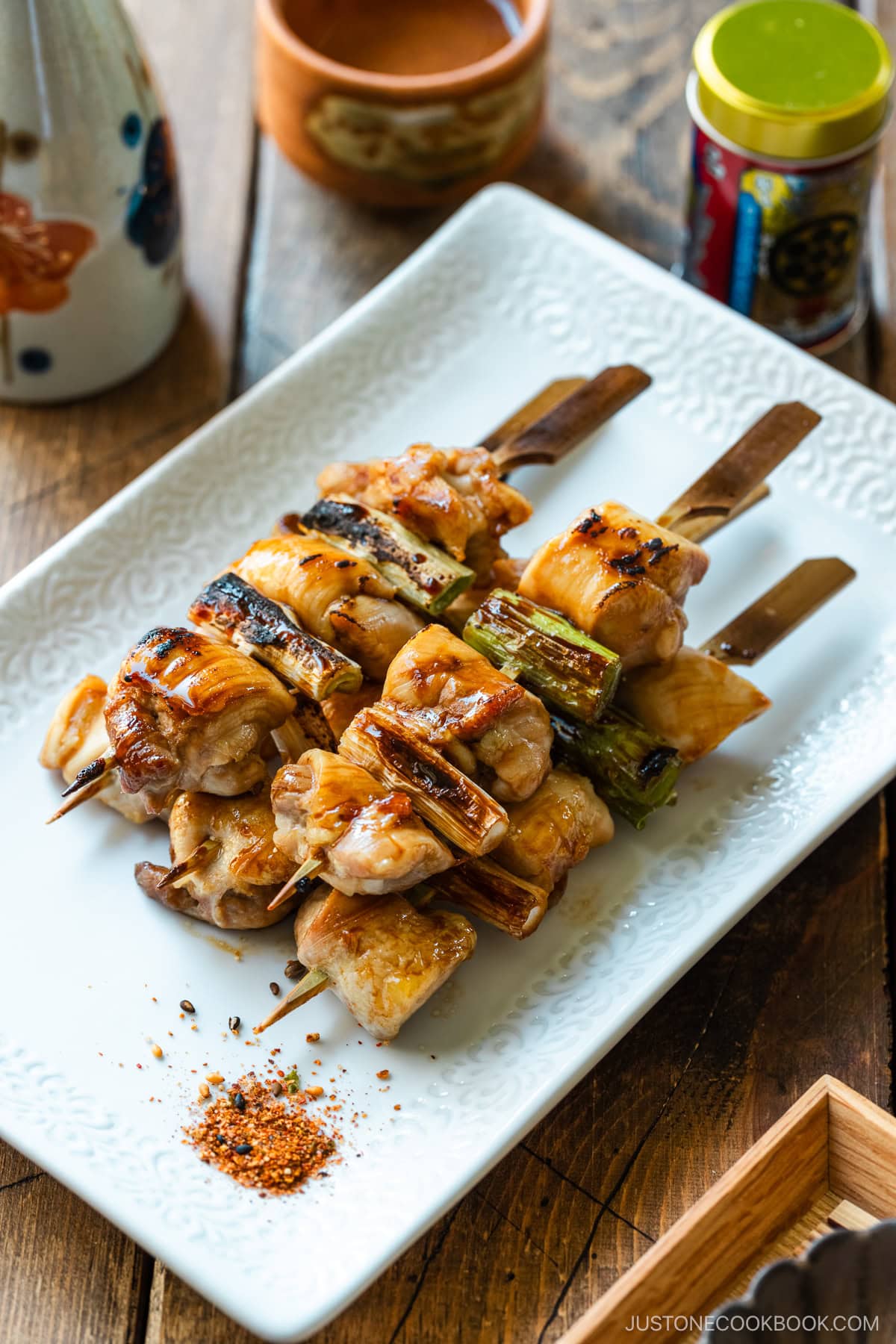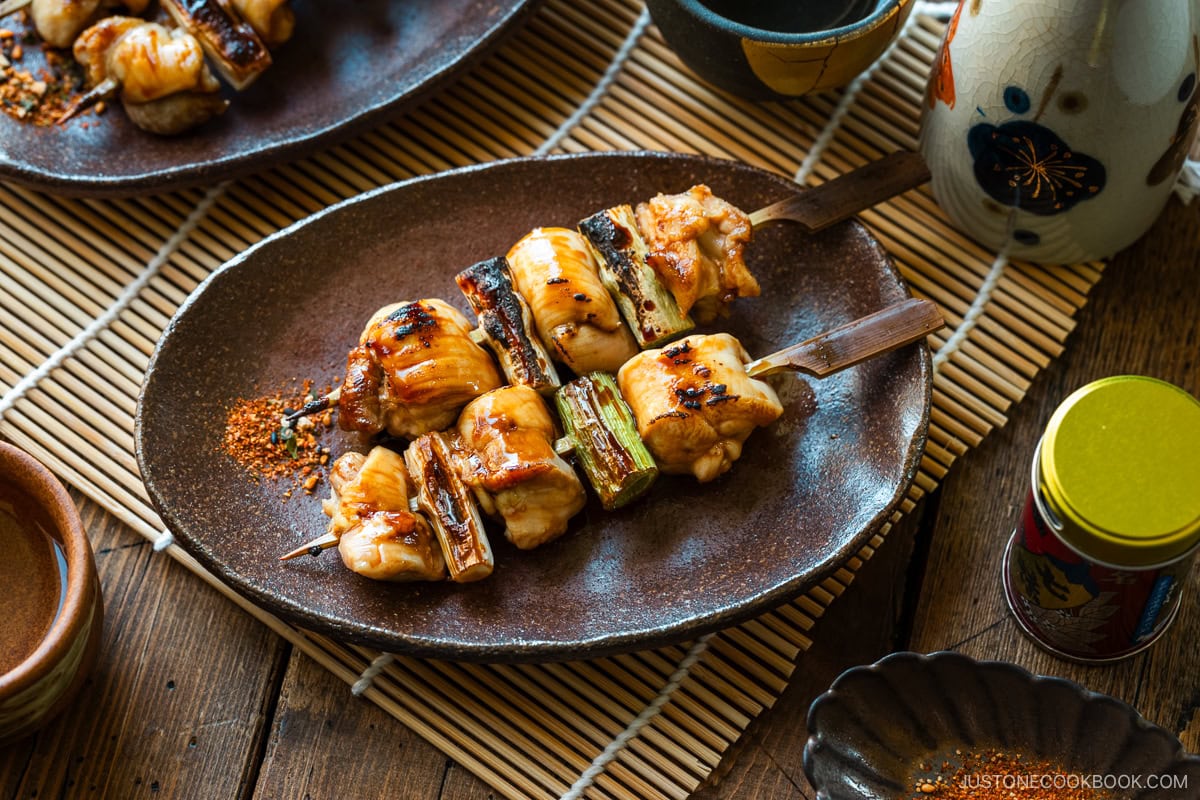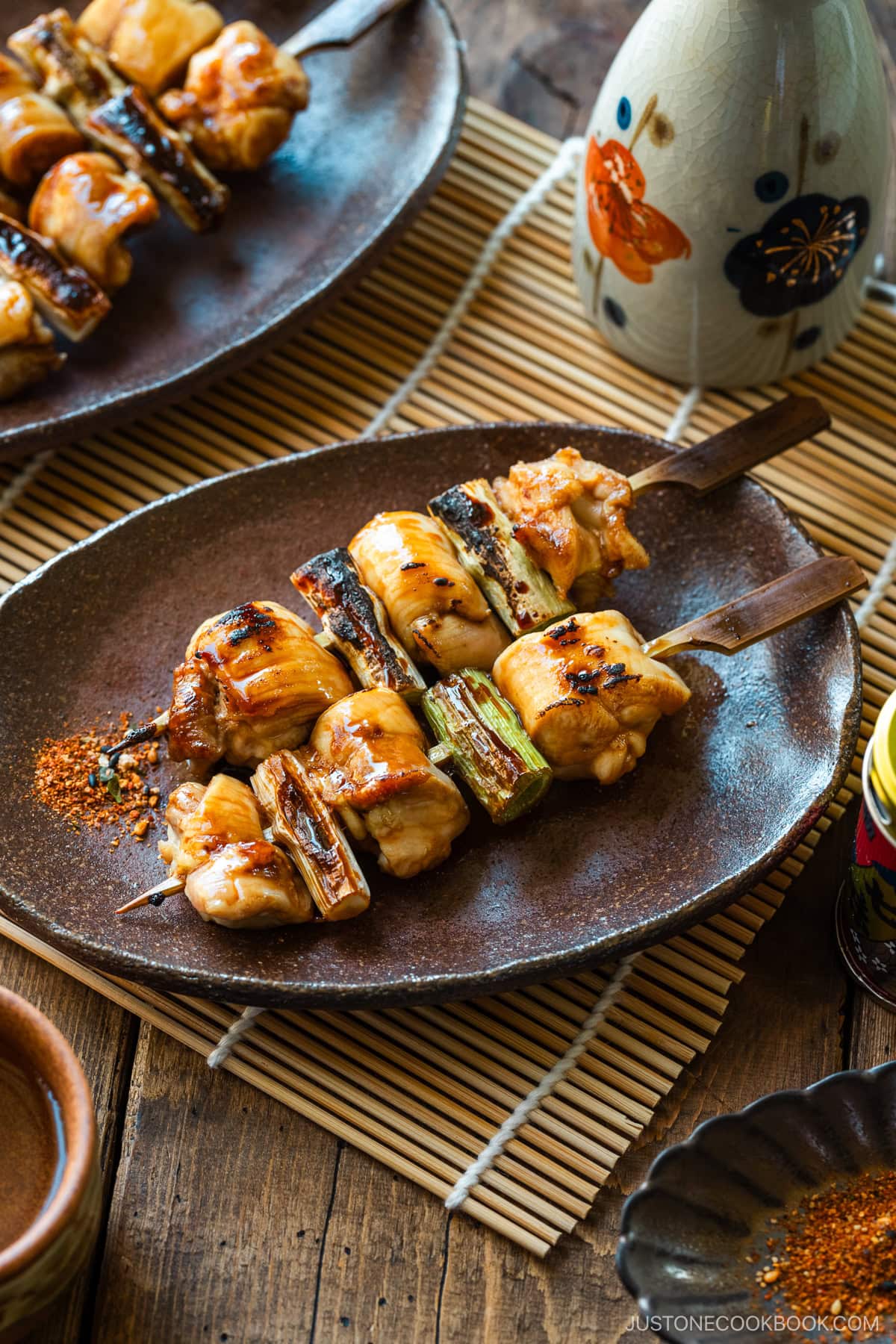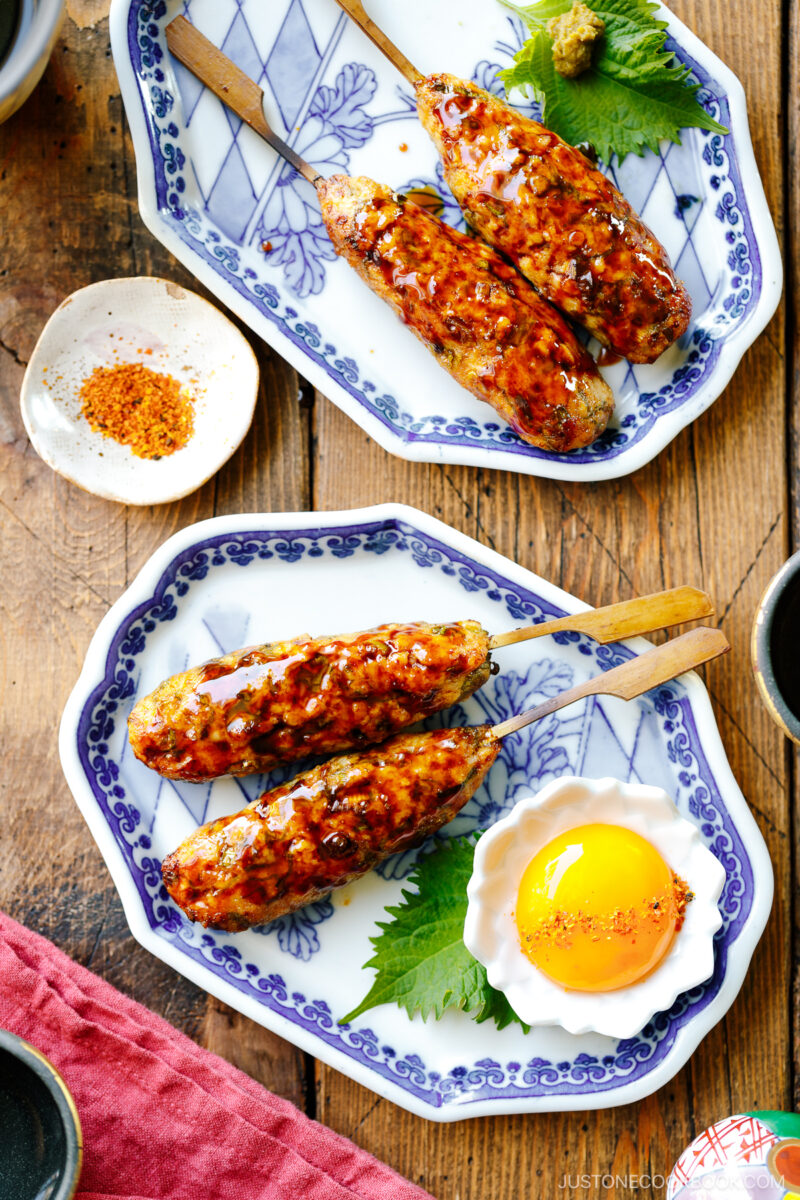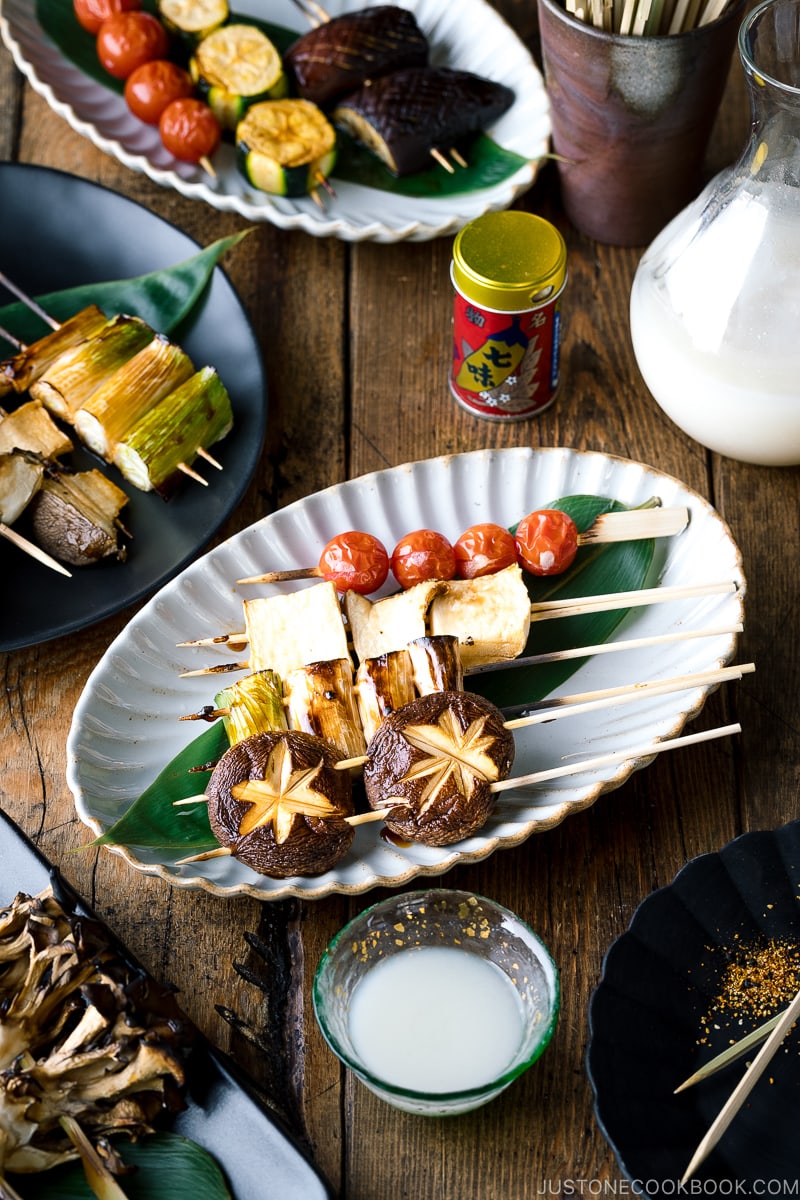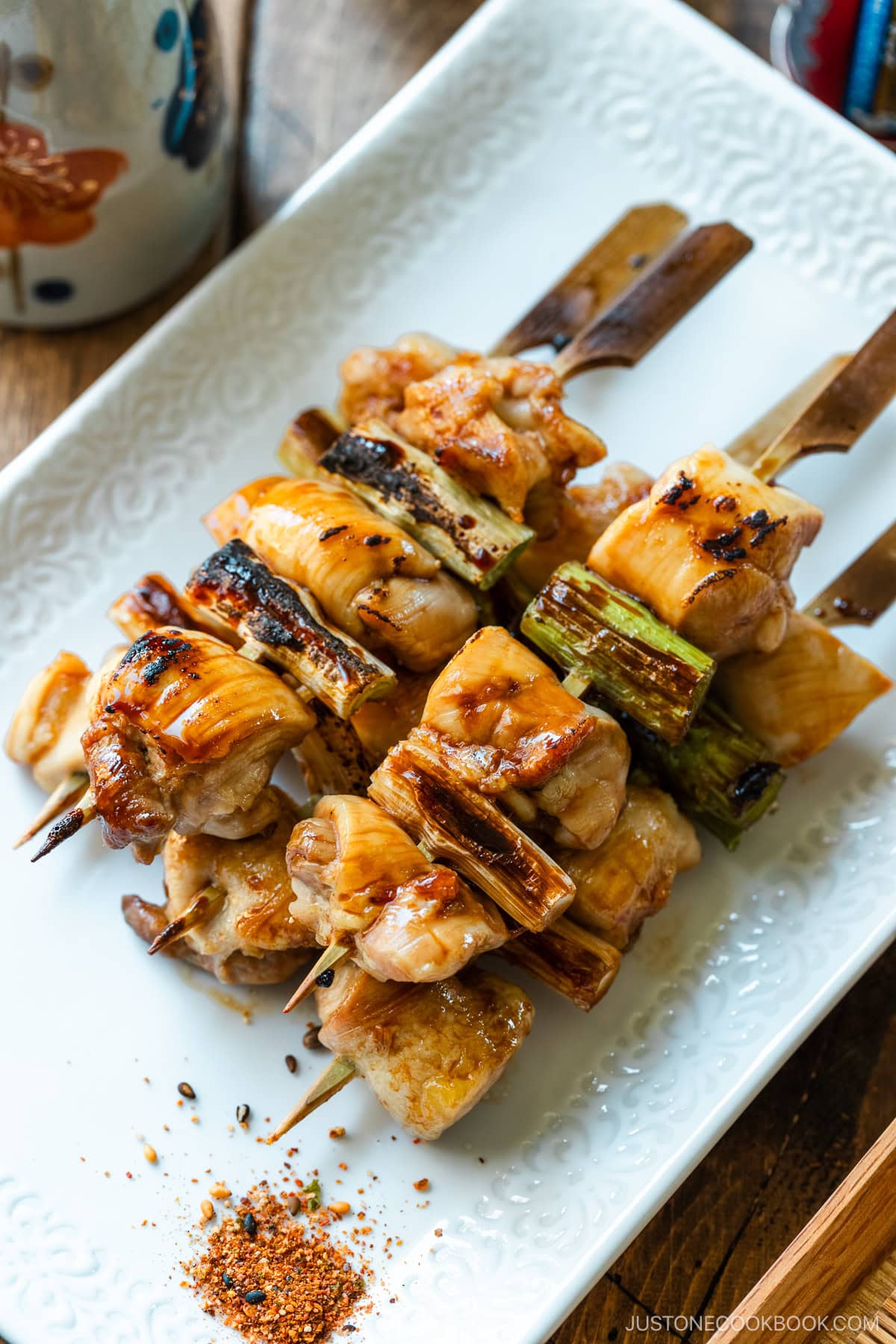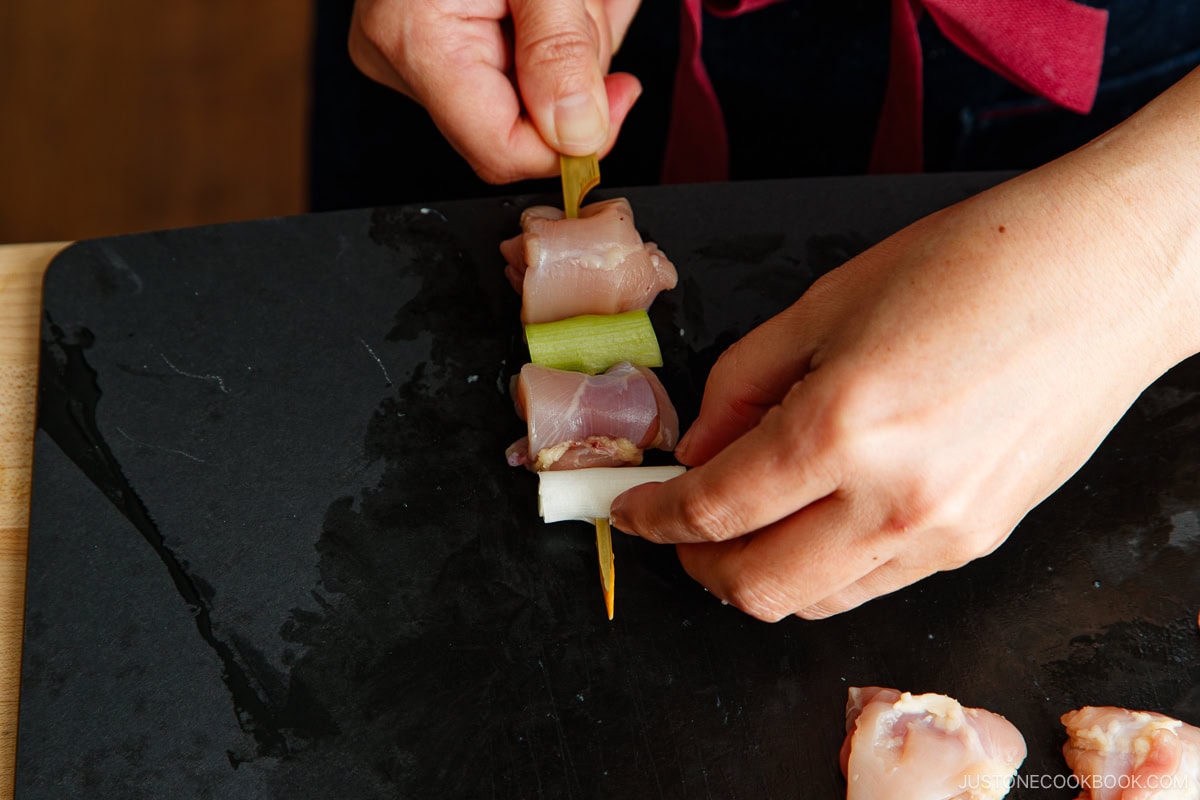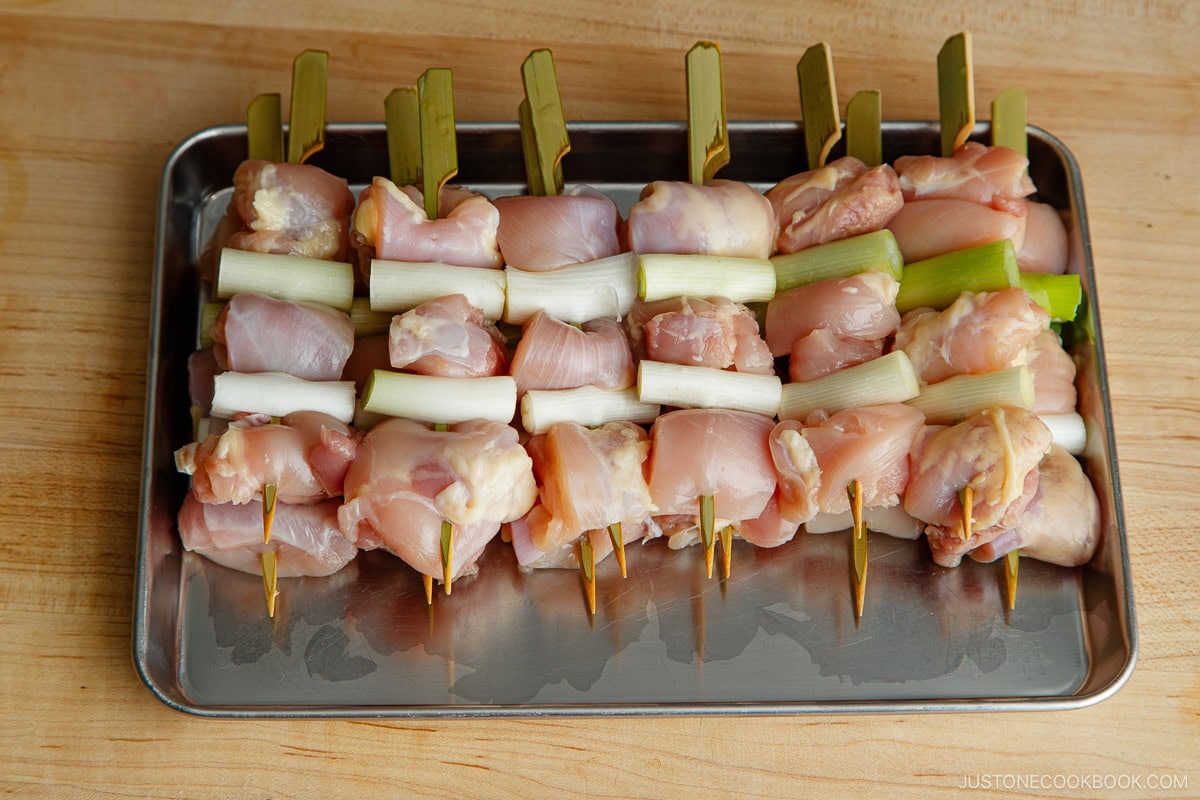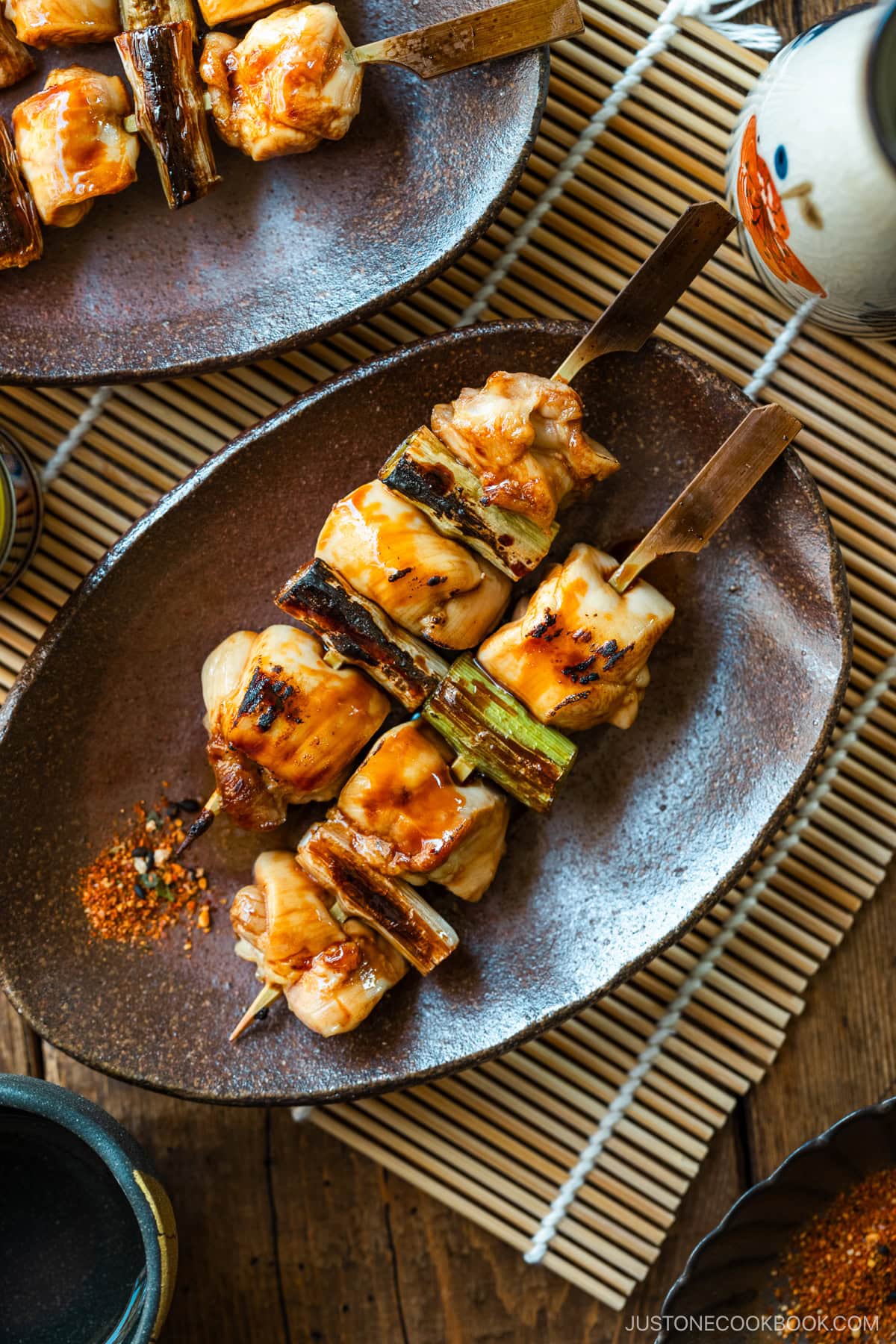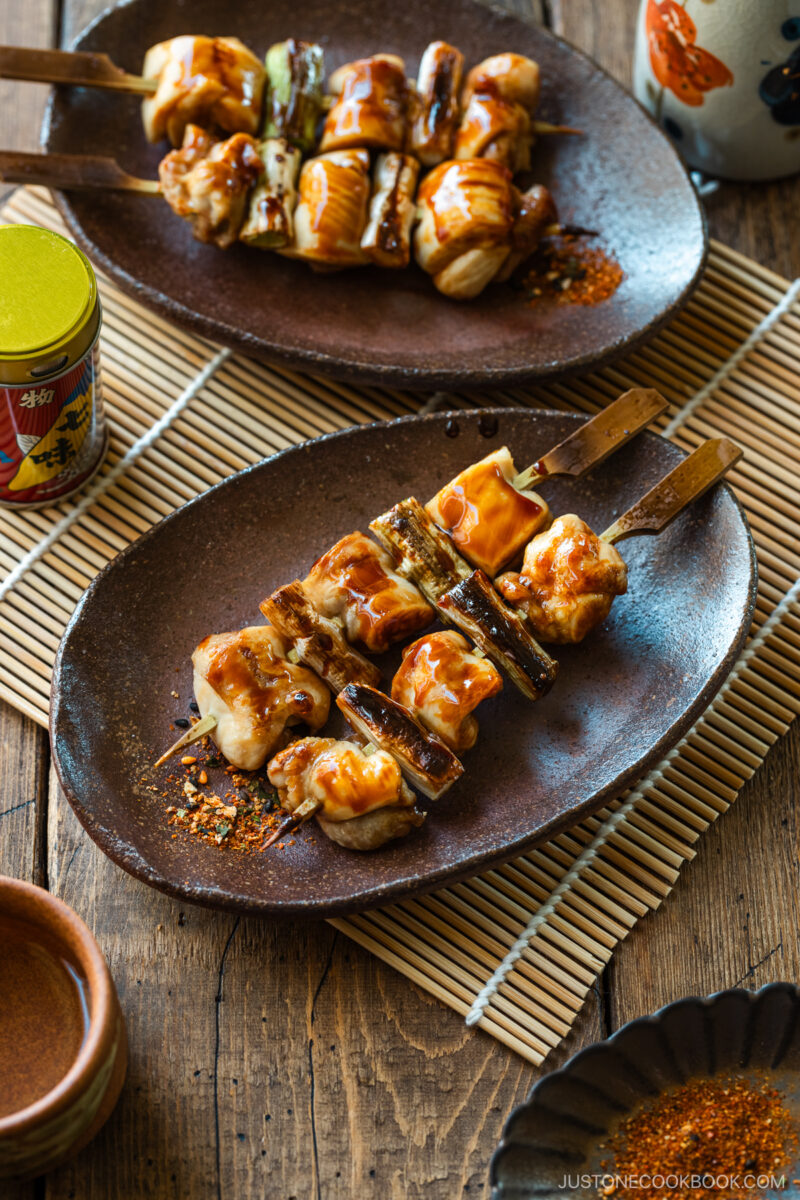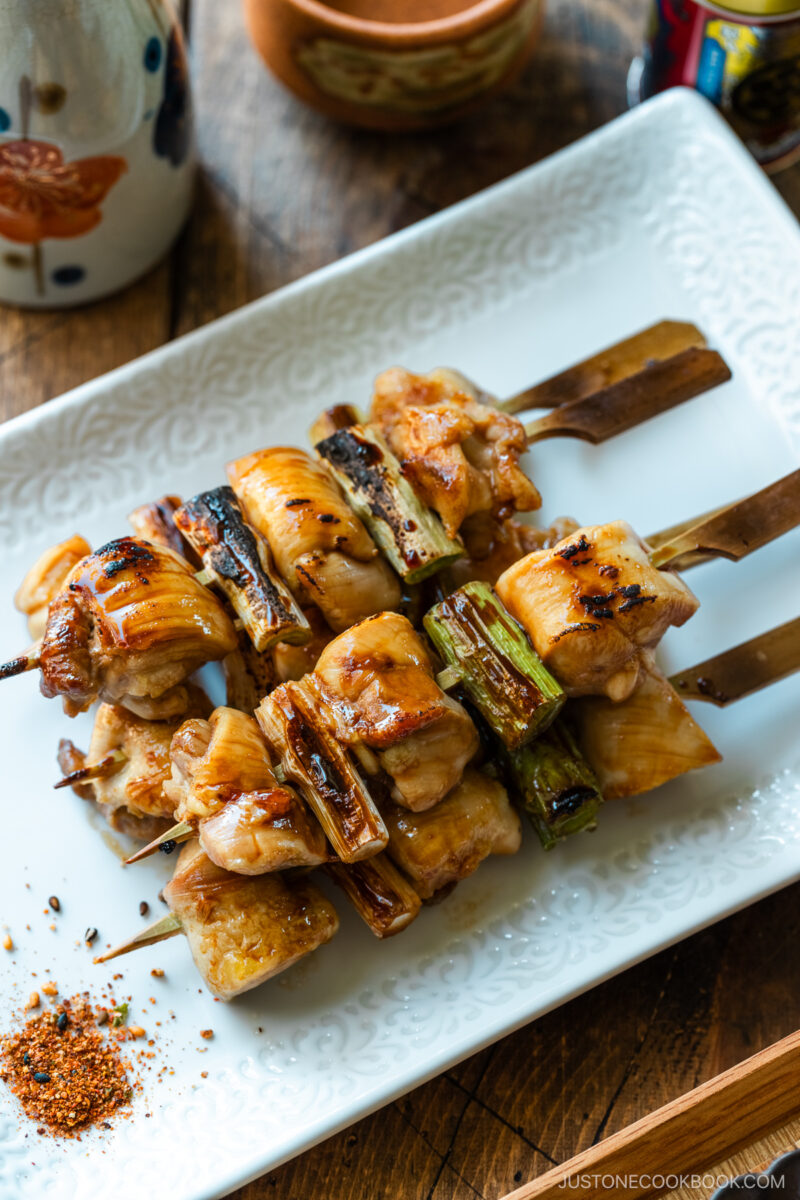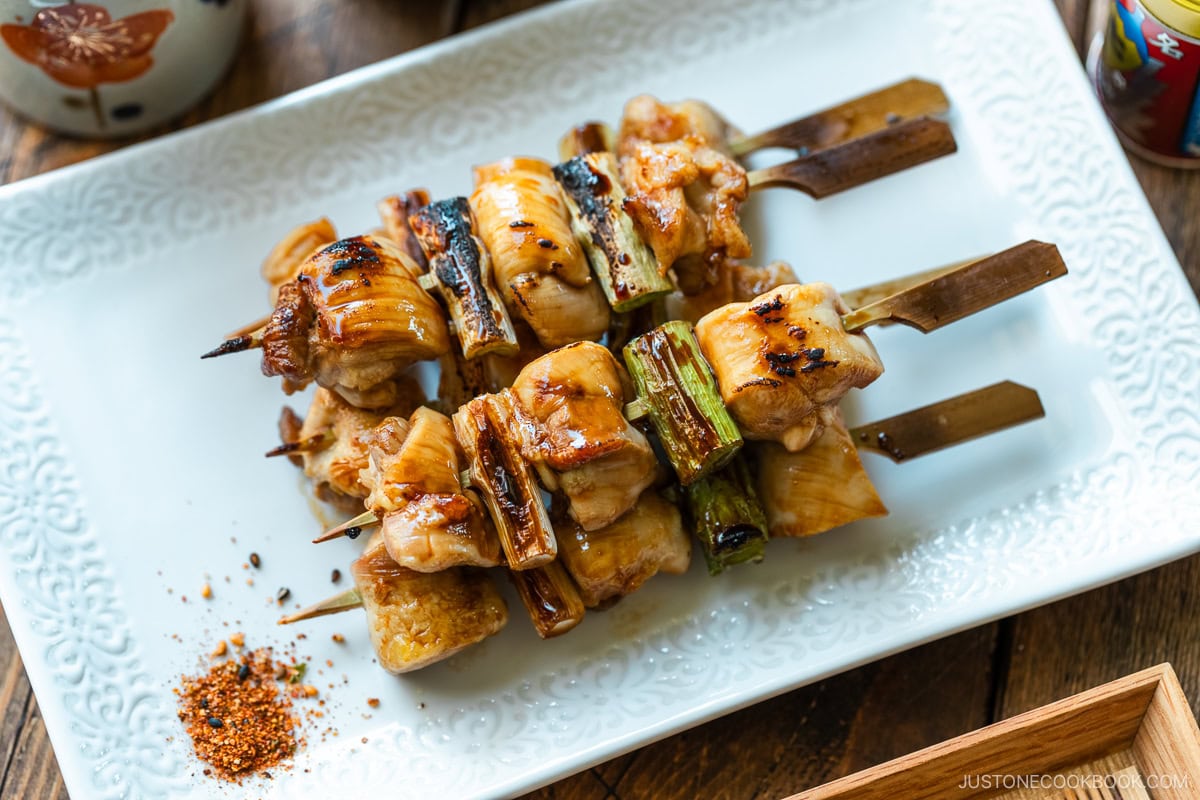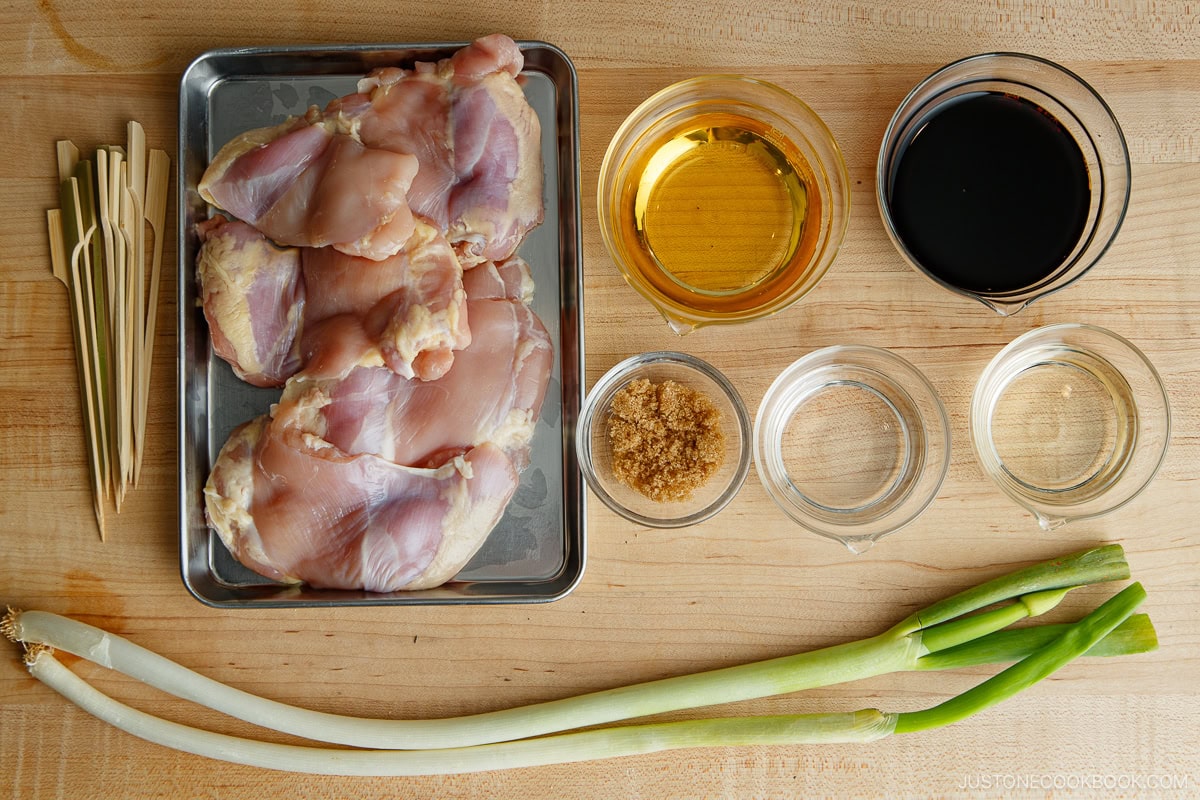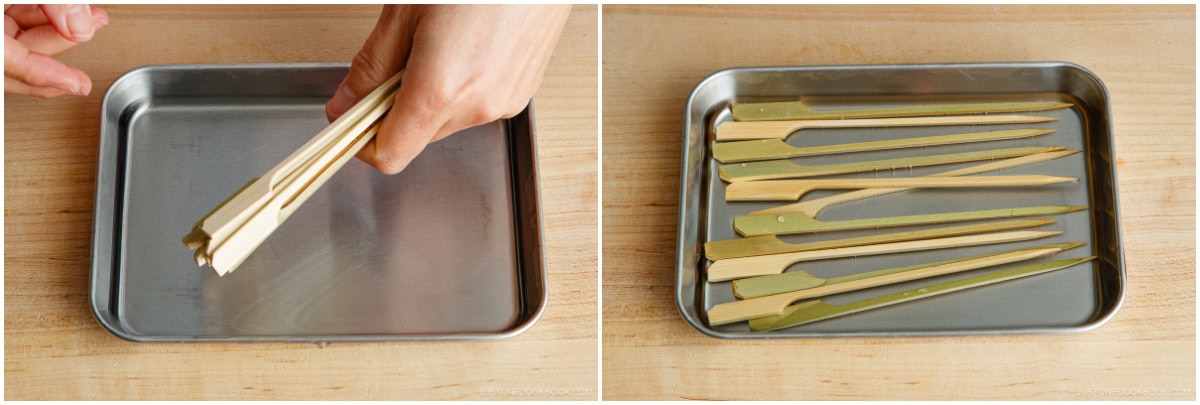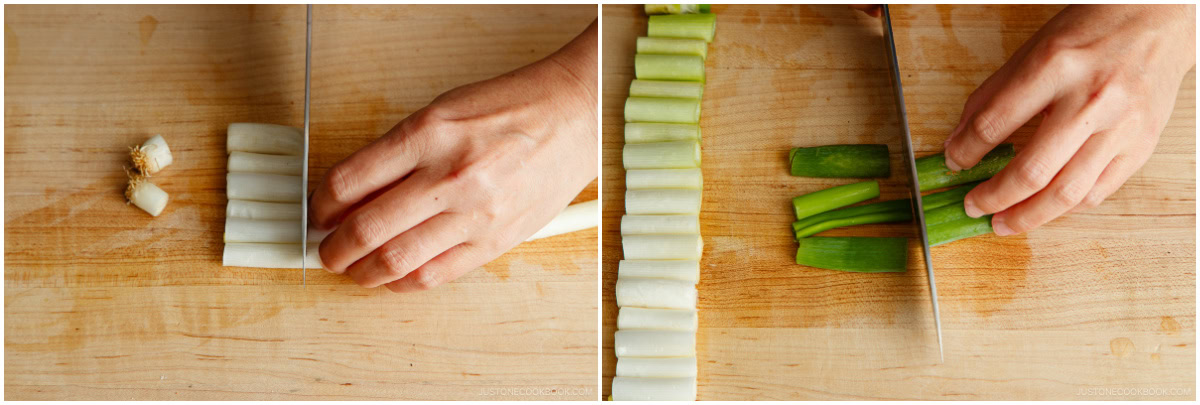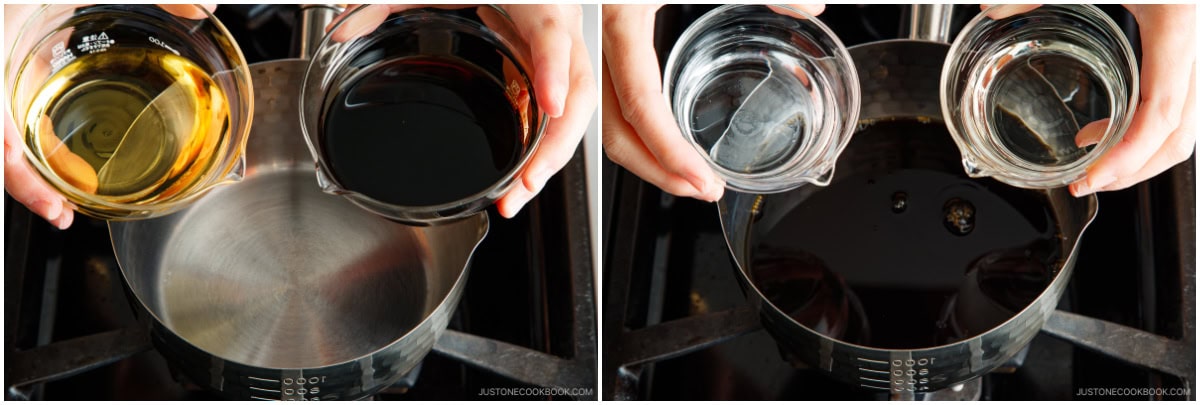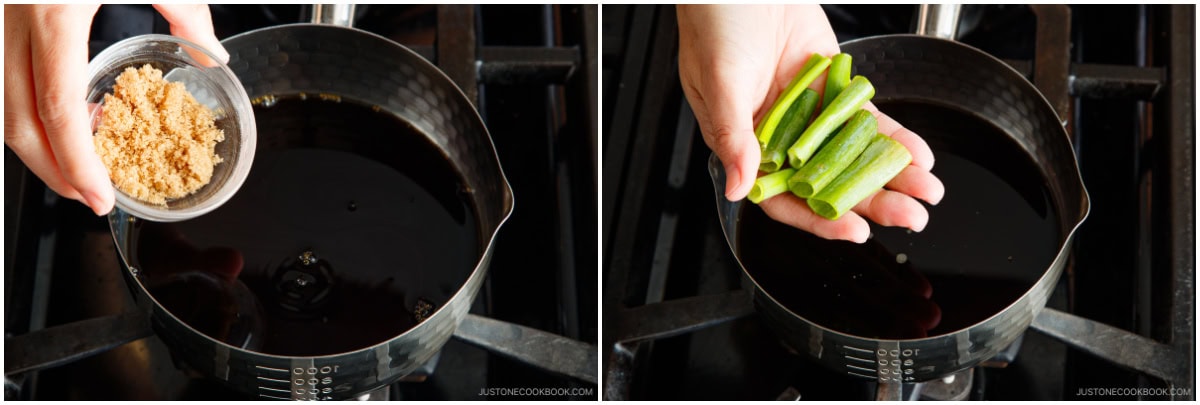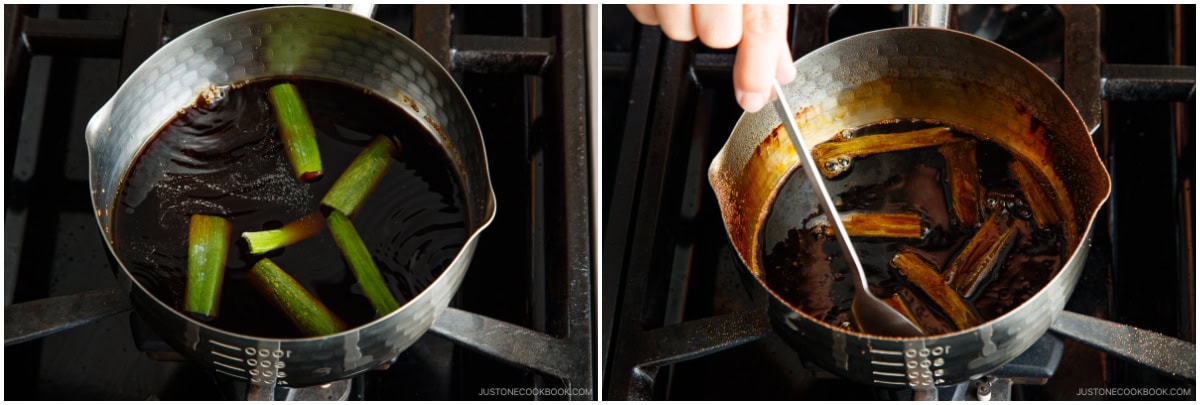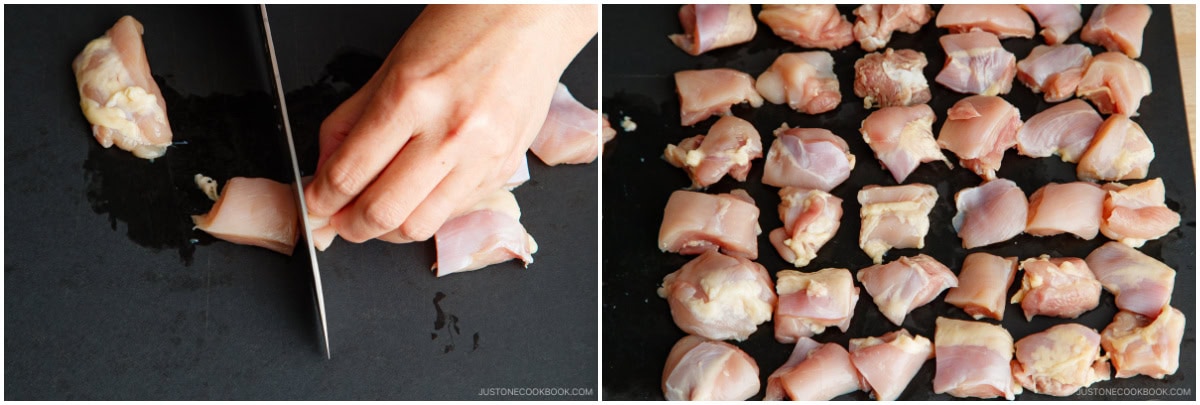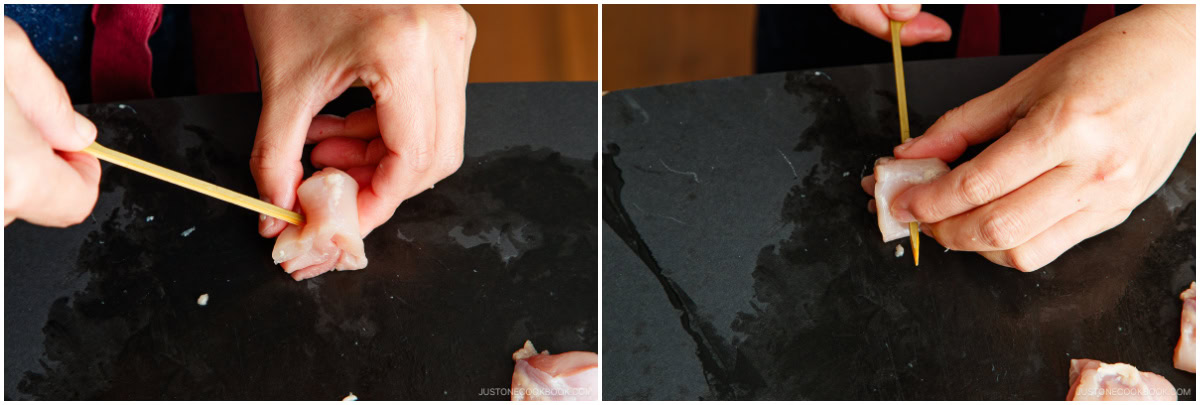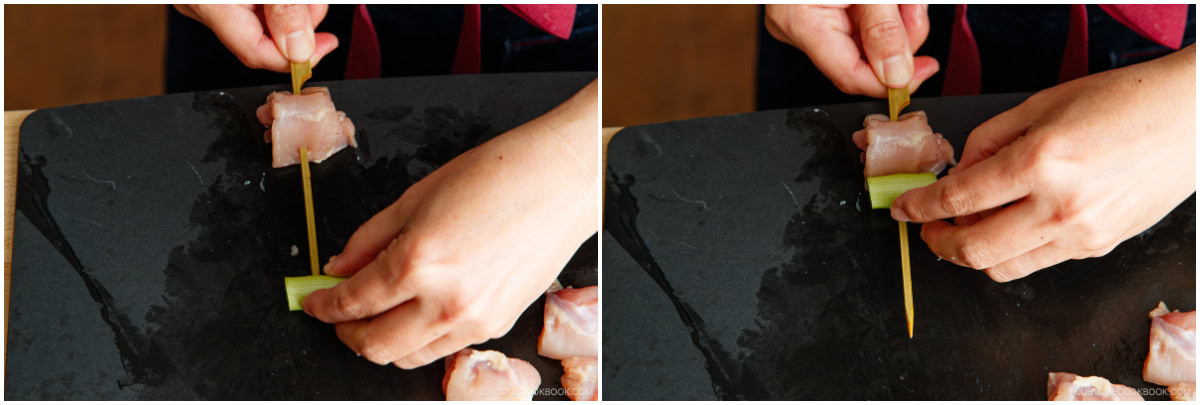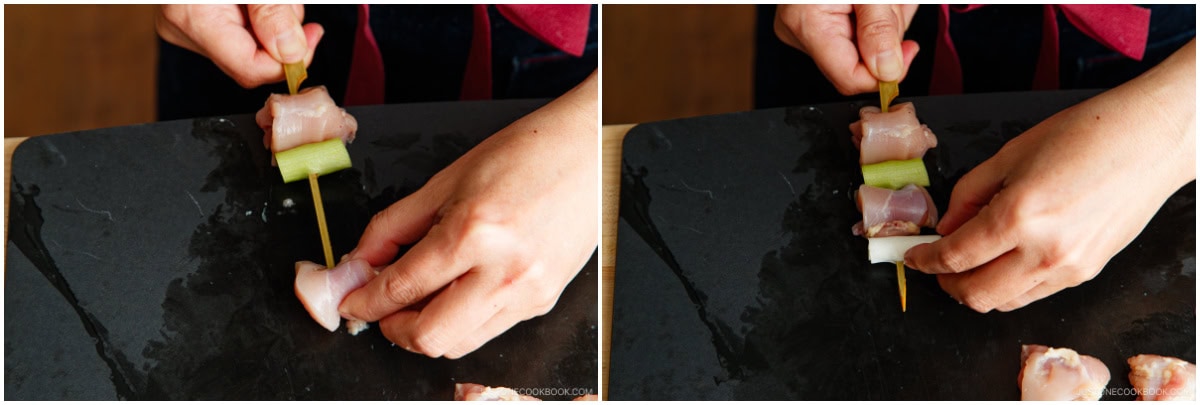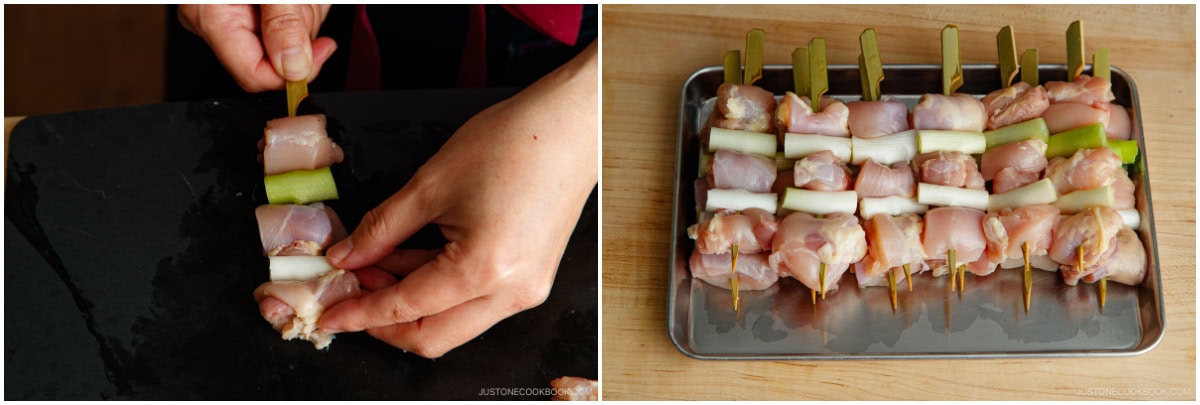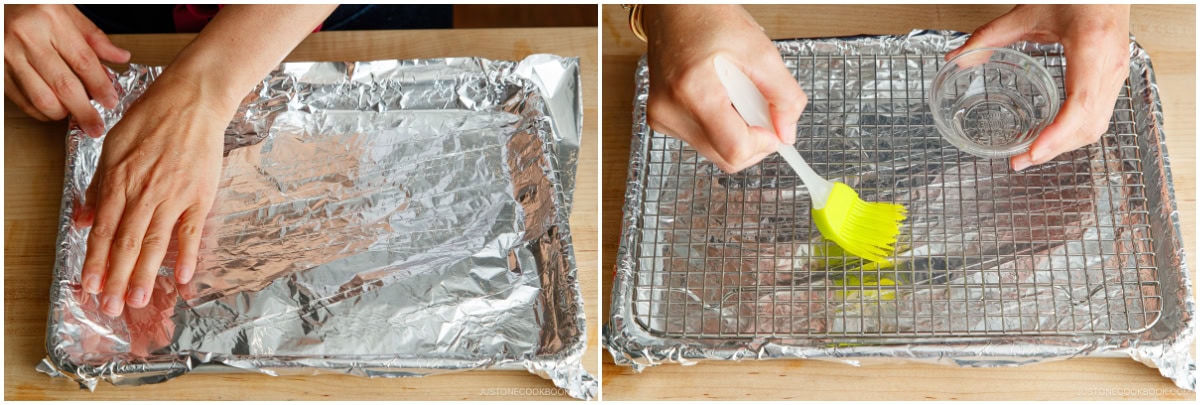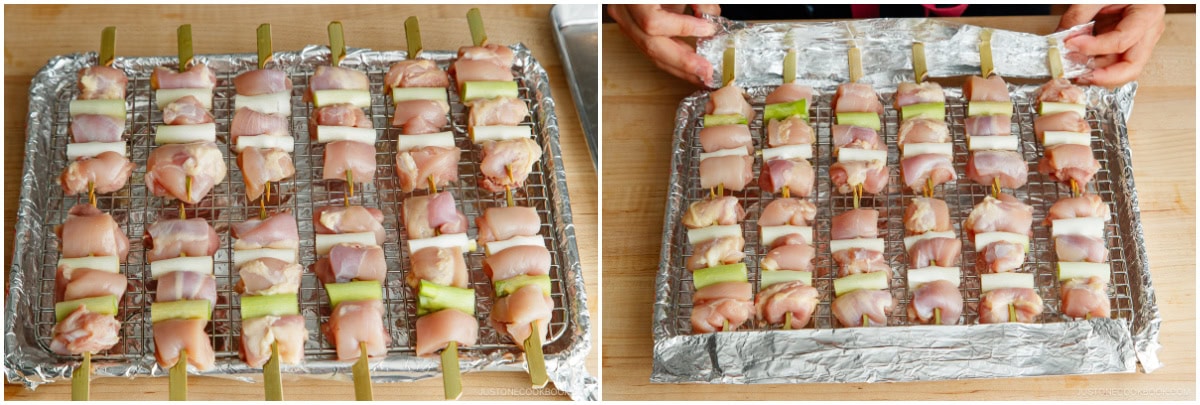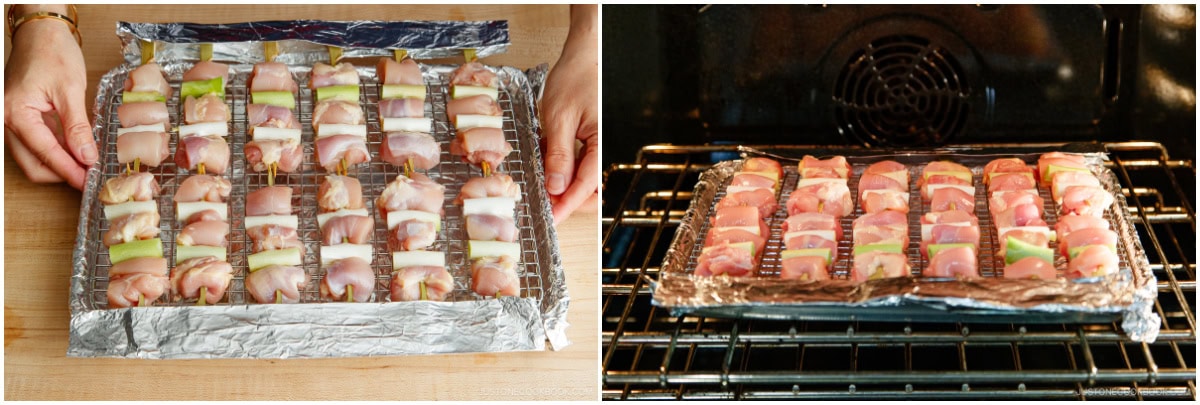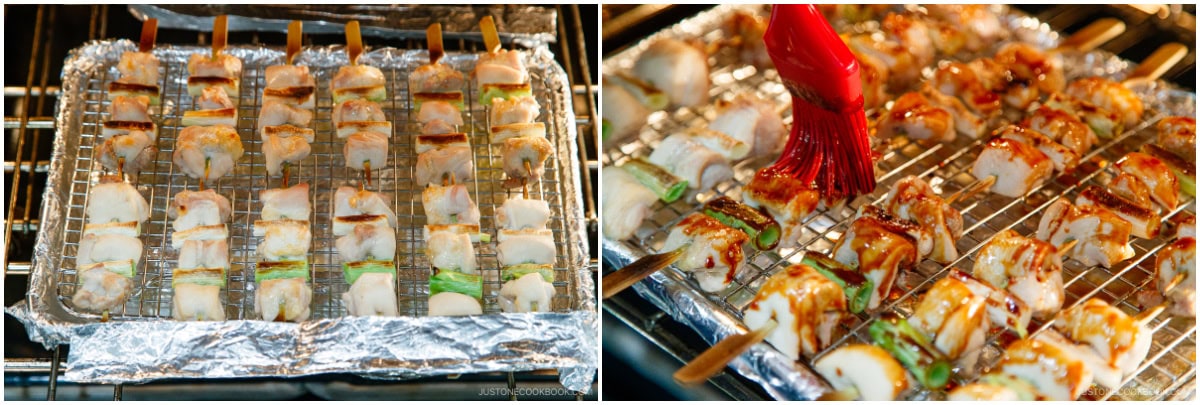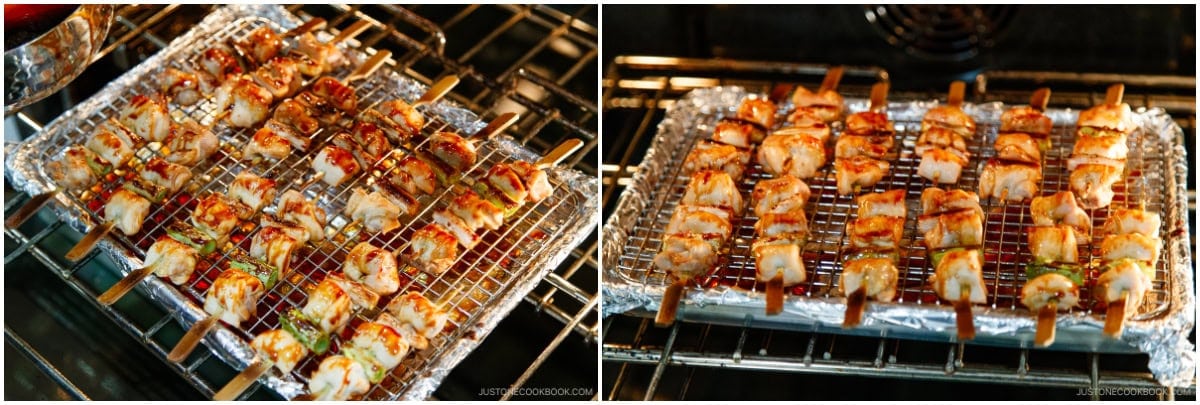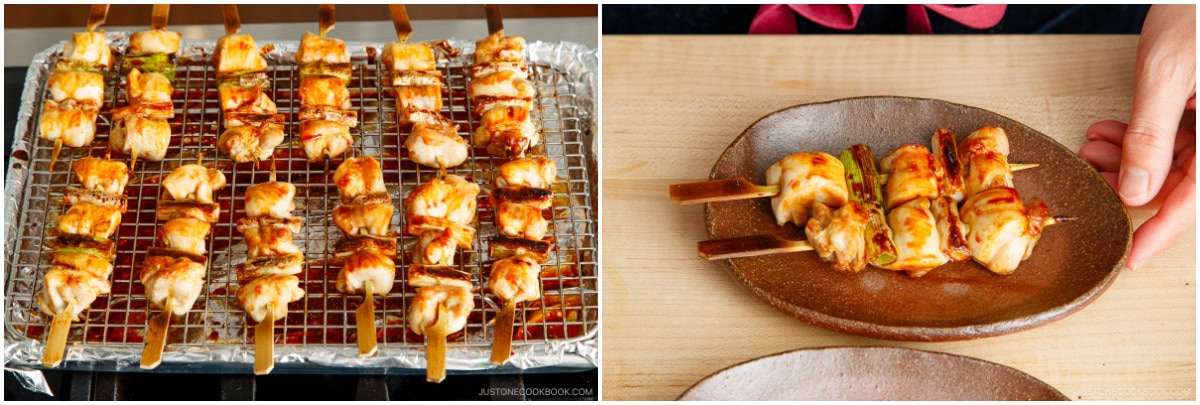My family loves yakitori, and we make sure to enjoy it whenever we visit Japan. It’s hard to resist the mouthwatering aroma of perfectly grilled chicken brushed with savory, caramelized yakitori sauce. The combination is simple yet sublime. I also have fond memories of meeting with friends over small plates of yakitori and drinks to catch up on work, family, and life. Yakitori is such a fun and shareable food that’s nutritious, satisfying, and full of flavor. Best of all, it’s easy to make at home under your oven broiler with simple ingredients. Let me show you how with my Yakitori recipe!
What is Yakitori?
Yakitori (焼き鳥) refers to Japanese-style grilled chicken skewers, literally translating to “grilled” (yaki) + “chicken” (tori). Traditionally, they’re cooked over hot Japanese binchotan charcoal on a long, rectangular grill that’s the perfect width to rest the bamboo skewers across the top. The yakitori tradition uses every part of the chicken, from meat to organs to cartilage. Each chicken part has a distinct texture, flavor, and appeal. To bring out their best qualities, yakitori chefs employ various methods of butchering, skewering, seasoning, and grilling, while sourcing the best-quality chicken available. Although skewered game birds or chicken have been part of Japanese cuisine for centuries, yakitori only gained popularity in the late 1950s with the introduction of broiler chickens bred for meat production by the United States. This led to an increase in the number of yakitori restaurants. Today, yakitori can be found throughout Japan at single-item specialty restaurants known as yakitori-ya (焼き鳥屋). Shinjuku, Tokyo, boasts a famous street called Yakitori Alley with over 80 yakitori eateries! There’s even a street in Shinjuku, Tokyo, called Yakitori Alley with more than 80 yakitori eateries! Friends and colleagues often meet up at Japanese bars and pubs called izakaya (居酒屋) to snack on small plates of yakitori with a beer. They’re a popular menu item at festivals, and Japanese love to make yakitori on camping trips, too!
Why This Yakitori Recipe Works
You don’t need specialty equipment or unique chicken parts to make one of the most popular versions, called Negima Yakitori—grilled chicken thigh and scallion skewers. This recipe is easy, juicy, and full of flavor!
Convenient oven broiling: Use your home oven‘s broiler to develop a nice char and grilled taste. Simple ingredients: My recipe uses boneless, skinless chicken thighs that you can find in any grocery store. They’re tender, juicy, tasty, and more forgiving to cook than chicken breasts. Easy homemade sauce: It takes just 4 pantry ingredients to make this traditional sweet-savory seasoning for an irresistible caramelized flavor.
Ingredients for Yakitori and Yakitori Sauce
For this basic recipe, you only need a few ingredients. It’s easy to switch them up, and I’ve provided some substitution options in the next section.
chicken thighs that are boneless and skinless; free-range, if you can find it Toyko negi or green onions sake, mirin, soy sauce, and brown sugar for the yakitori sauce (tare)
Substitution Tips and Variations
While my recipe is a classic version of yakitori, you can certainly use other ingredients:
Chicken is traditional, but you could use other proteins like sliced beef, pork loin slices, or strips of pork belly. If you’re feeling adventurous, try other chicken parts—see below for ideas! Don’t miss out on trying yakitori with ground chicken meatball called Tsukune. Swap other vegetables for the Tokyo negi or green onion. Consider shiitake mushrooms, king oyster mushrooms, shishito peppers, cherry tomatoes, asparagus, zucchini, eggplant, and regular onions. You can even make plant-based Yakitori-style Grilled Vegetable Skewers for a vegan/vegetarian version. If you crave ginger and garlic flavors, try adding some to the saucepan before reducing the sauce. For a lighter seasoning, sprinkle salt (shio) on your skewers before cooking and skip the sauce (tare).
How to Make Yakitori
How to Make the Best Yakitori Sauce
This traditional sauce (called tare in Japanese) is surprisingly simple, yet it’s all you need for an authentic yakitori flavor.
Skewering Tips and Techniques
On a flat work surface, fold a slice of chicken in half. Holding the skewer at a 45-degree angle, pierce the side of the folded meat. Then, tilt the skewer down so it‘s parallel to the work surface and push it all the way through. Position the chicken next to the handle. Add a piece of Tokyo negi perpendicular to the skewer, tucking it snuggly next to the chicken. Alternate chicken and Tokyo negi pieces, ending with a chicken slice.
Other Chicken Parts for Yakitori
Here are some popular chicken parts that make delicious yakitori. How many have you tried?
chicken thigh (momo, もも) chicken breast (mune, むね) chicken tender (sasami, ささみ) chicken skin (kawa, 皮) chicken wings (tebasaki, 手羽先) chicken tail (bonjiri, ぼんじり) chicken cartilage (nankotsu, 軟骨) chicken heart (hatsu, ハツ) chicken liver (rebā, レバー) chicken gizzard (sunagimo, 砂肝) ground chicken (tsukune, つくね) – Tsukune Recipe
How to Store
Leftover skewers: You can keep them in an airtight container and store in the refrigerator for up to 3 days or in the freezer for up to a month. Leftover sauce: Remove the negi greens from the sauce and pour it into a mason jar. Keep in the refrigerator for up to 2-3 months.
Can I use chicken breast?
You can use chicken breast, though it tends to dry out easily. You’ll need to watch carefully while broiling. Keep in mind that breast meat is not as flavorful as thigh meat, so your skewers will have a milder taste.
Can I grill it outside?
Absolutely! In addition to the traditional yakitori grill, you can also use a hibachi BBQ grill or a standard outdoor BBQ grill.
What to Serve with Yakitori
Rice – Yaki Onigiri, Miso Yaki Onigiri, Japanese Corn Rice Soup – Tomato and Tofu Miso Soup, Glass Noodle Soup, Cold Miso Soup (Hiyajiru) Salad – Japanese Cucumber Salad, Harusame Salad, Japanese Potato Salad Sides – Grilled Corn with Miso Butter, Edamame Pods, Blistered Shishito Peppers
Wish to learn more about Japanese cooking? Sign up for our free newsletter to receive cooking tips & recipe updates! And stay in touch with me on Facebook, Pinterest, YouTube, and Instagram. Editor’s Note: This post was originally published on Apr 13, 2014. It was updated with more helpful information and new step-by-step and final images on April 18, 2024. The post was republished on May 13, 2024.
